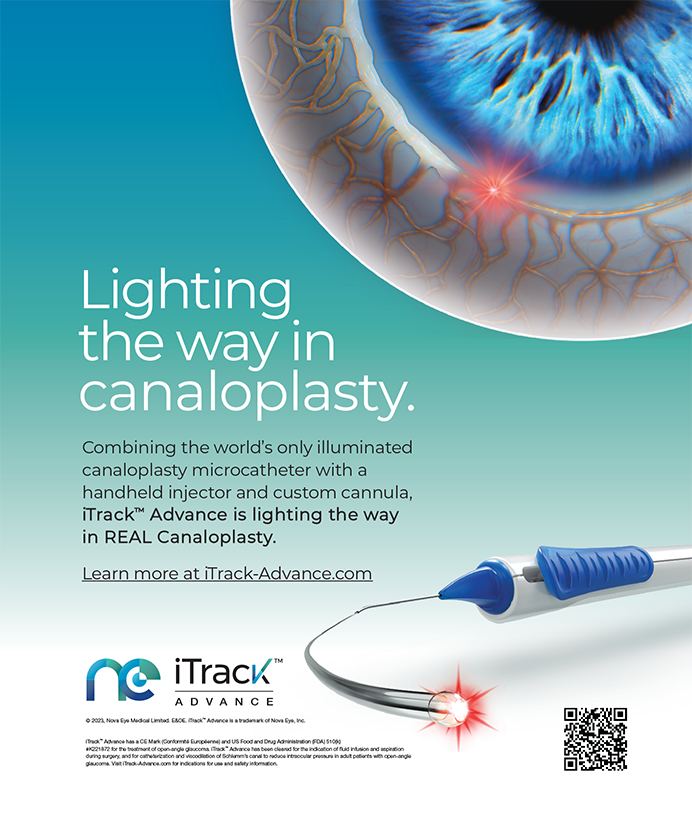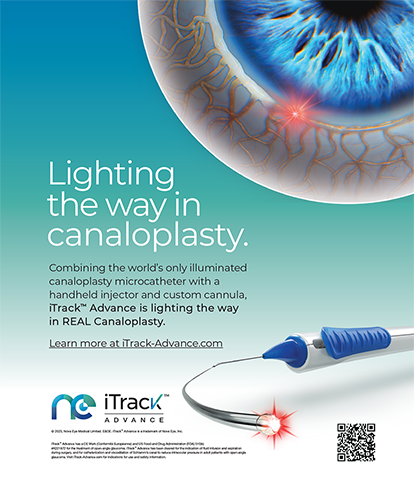One of the most challenging patients cataract surgeons face today is the refractive surgery patient of yesterday. Refractive surgery has been mainstream since the late 1980s, and now, those first patients need cataract surgery. Because they have a refractive surgery mentality, they may be presenting with complaints of a loss of vision at an earlier stage than what surgeons are used to seeing. Whether patients had RK, automated lamellar keratoplasty, or laser vision correction, multiple formulas exist to guide surgeons toward successful outcomes. I have tried multiple lens designs for these patients and have found that many of them are happy with a monofocal IOL or a toric implant, because they want crisp distance vision. Nonetheless, there are exceptions to every rule.
CASE
A 42-year-old woman presented for refractive surgery in September 1996. Her original refraction was -12.50 +1.00 × 80 = 20/25 OD and -13.00 +1.00 × 85 = 20/25 OS. Her original computed topography was normal with regular withthe- rule astigmatism. The original keratometry readings were 46.10 @90/44.75 @180 OD and 47.00 @80/45 @170. Her original pachymetry readings were 475 μm OD and 485 μm OS. In 1997, the patient underwent a LASIK enhancement of her left eye. The surgeon lifted the flap and treated -0.50 +1.00 × 65. She had no problems with her vision until 2003, when her refraction measured -1.50 +0.250 × 29 OS for 20/30 BCVA. Early signs of ectasia were present based on serial tomography and topography. The patient discussed her options with the surgeon, but she was using her left eye for monovision without incident (Figure 1).
The patient continued to show changes in keratometry and refraction. In 2004, she was referred for corneal collagen cross-linking (CXL; not approved for use in the United States) with riboflavin and the placement of Intacs (Addition Technology, Inc.). She underwent the procedure without difficulty, and Figure 2 shows her postoperative result by computed topography. Her refraction in 2006 was +0.75 +0.25 × 45, with a BCVA of 20/20 and a UCVA of 20/40+2.
CXL with riboflavin and Intacs can be beneficial for stabilizing post-LASIK ectasia. Other options include CXL with riboflavin alone or in conjunction with computedtopography- driven laser vision correction. 1 Whatever the issue, previously cross-linked patients will soon be presenting to surgeons for cataract surgery.
The patient routinely returned for observation and was happy with her vision until, at age 57, when she returned for routine follow-up. It had been 15 years since her original surgery. Her left eye's manifest refraction was +1.25 +0.25 × 22, with a BCVA of 20/50. A slit-lamp examination revealed peripheral cortical changes and a posterior subcapsular cataract. Figure 3 shows her current computed topography. The slit-lamp and retinal examinations were otherwise normal.
APPROACH TO CATARACT SURGERY
How should one handle these patients who present for cataract surgery? In this instance, I treated her ocular surface for 2 months to ensure it was healthy so that I might obtain the best readings possible for the IOL power calculations. I used several topographers to get average corneal powers to use in a variety of IOL power calculation formulas. I wanted to obtain a weighted average over the 3.5- to 4.5-mm optical zone that matched her photopic and mesopic pupillary size (Figure 4).
I elected to use the LenSx Laser (Alcon Laboratories, Inc.) to allow me to achieve a perfect capsulotomy in the pupillary center. Together, the patient and I chose a monofocal aspheric toric IOL, because she wanted crisp distance vision and had considered all of the premium options. I was able to place the incision at any location using the laser, which allowed for its perfect placement and depth using real-time optical coherence tomography with the LenSx Laser system. Intraoperative analysis with the ORA System (WaveTec Vision) helped me to achieve perfect alignment of the toric implant and a successful outcome. The surgery itself was uneventful. Postoperatively, the patient has a UCVA of 20/30 and a BCVA of 20/25 with -0.25 +0.50 × 90.
As this case shows, with diligence, even the most challenging cases of cataract and prior refractive surgery can be successfully treated.
Karl G. Stonecipher, MD, is the director of refractive surgery at TLC in Greensboro, North Carolina. He is a member of the medical advisory board for the LenSx Laser, a consultant to Alcon Laboratories, Inc., and on the speakers' bureau for WaveTec Vision. Dr. Stonecipher may be reached at (336) 288-8523; stonenc@aol.com.
- Kanellopoulos AJ. Post-LASIK ectasia. Ophthalmology. 2007;114(6):1230.


